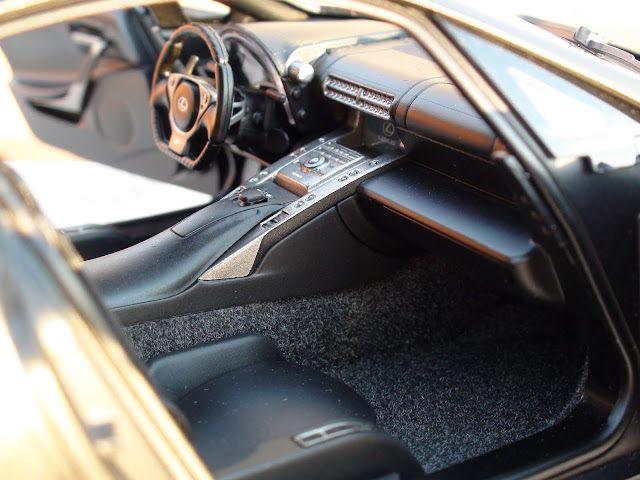Marca - AutoArt Signature
Escala - 1:18
The Lexus LFA is a two-seat exotic sports coupe produced by Lexus as a concept car, "halo" vehicle, racing prototype, and production model. It is the second model in the F marque line of performance vehicles from Lexus, following the IS F. Three concept versions have been shown, each debuting at the North American International Auto Show with the LF-A designation as part of the LF Series concept line. The first LF-A concept premiered in 2005, followed in 2007 by a second LF-A with a more completely furnished interior and exterior. The third version of the LF-A, a roadster model, premiered in 2008. The production model, trademarked LFA, was shown at the Tokyo Motor Show in October 2009.
The production Lexus LFA features a new V10 engine and a carbon fiber-reinforced polymer (CFRP) body. CFRP materials account for 65 percent of the LFA's body composition by mass. The LFA is scheduled to go into production in late 2010, with a projected run of 500 vehicles at the base price of US$375,000. A circuit-tuned variant is scheduled for 2012.
The Lexus LFA is powered by a 72-degree bank angle 4.8-liter V10 engine equipped with dual VVT-i carrying the 1LR-GUE designation with a maximum output of 560 PS (412 kW) delivered at 8,700 rpm. Its maximum torque output of 354 lb·ft (480 N·m) arrives at 6,800 rpm, 90 percent of which is available from 3,700 rpm. The engine redlines at 9,000 rpm, but with a fuel cutoff set at 9,500 rpm, and is constructed using forged aluminum pistons, forged titanium connecting rods, and solid titanium valves. The V angle of the LFA's V-10 engine is set to 72-degrees (as opposed to the 90-degree V angle present in a Dodge Viper's V-10) to fully balance the firing force from the pistons. This 72-degree angle allows for even firing from the pistons without the use of a split-journal crankshaft, thus improving engine efficiency as well as lowering overall weight. Dry sump lubrication prevents engine oil starvation through high speed corners and lowers the engine's center of mass. Air is fed directly from beneath the hood through a visible slit passing into a dual stage variable intake manifold and then into ten individual throttle bodies before finally exiting from a dual stage titanium muffler.












































































Sem comentários:
Enviar um comentário